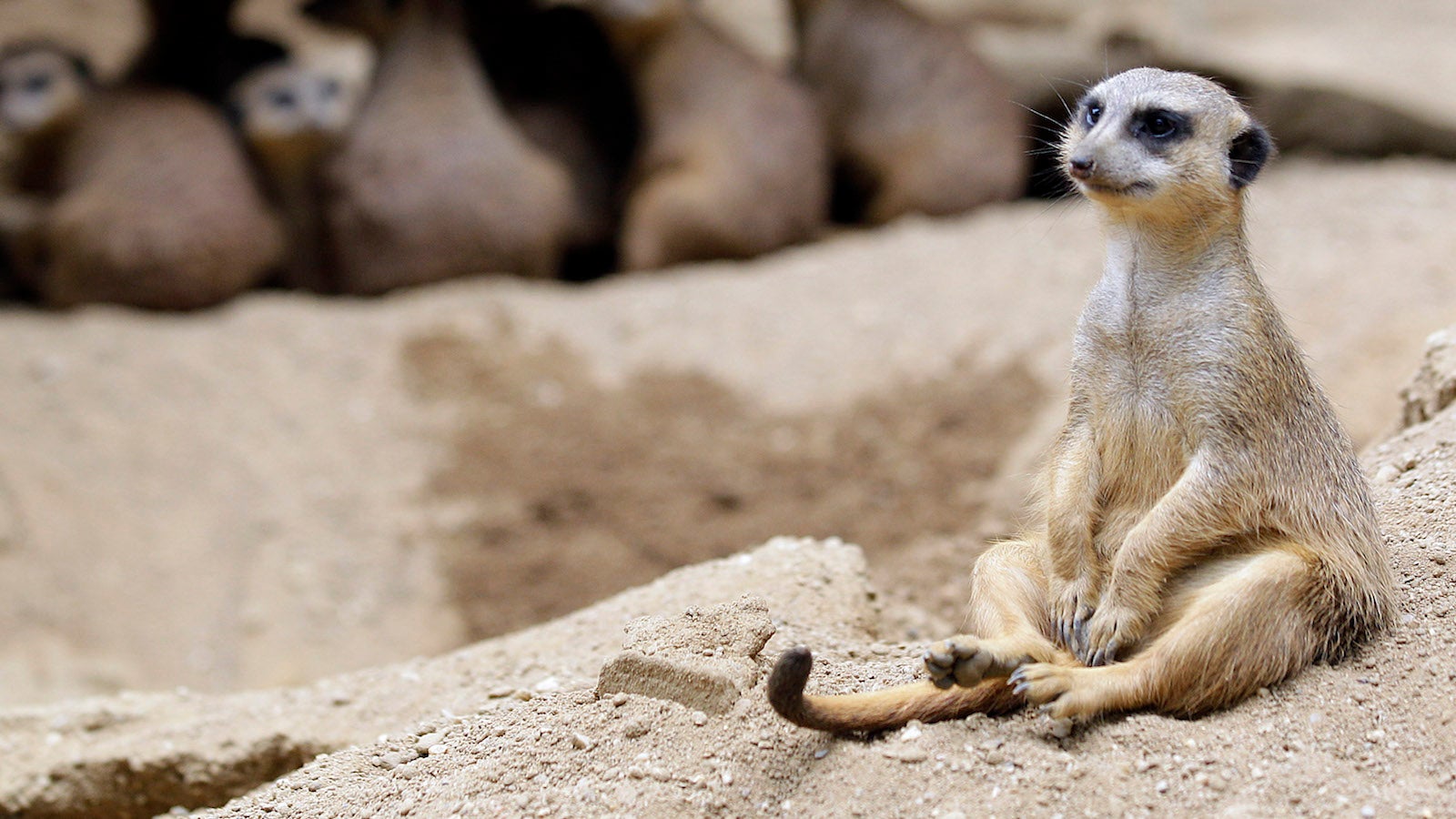Climate change threatens to wipe out meerkats in the next 50 years
The global meerkat population hangs in the balance, with a new scientific model giving them about 50 years before its stares down the gauntlet of extinction.


The global meerkat population hangs in the balance, with a new scientific model giving them about 50 years before its stares down the gauntlet of extinction.
The new model—built off some of the latest work by climatologists—was presented this week (Feb. 13) in a new study published in the journal Proceedings of the Royal Society and it attempts to give us insight into how ecosystems reshaped by climate change will impact certain wildlife.
For the research, a team of scientists from the University of Zurich and the University of Cambridge combed through data that had been collected by the Kalahari Meerkat Project between 1997 and 2016. That project is an ongoing, long-term effort to mine data about the regional meerkat population in the Kuruman River Reserve in South Africa. Most meerkats live in the southern tip of the African continent.
Changes in the physical environment affect the growth, survival rates, and reproduction habits in meerkat colonies. Wet and warm conditions in the summertime are often indicative of greater reproduction and growth. Colder weather in the winter decreases individual growth and the overall survival rate.
Using that information, the researchers set out to build a model that can project changes in the Kalahari meerkat population based on data published by scientists in a climate change report issued by the US National Center for Atmospheric Research (NCAR). They found that in the region, hotter and drier summers will likely threaten the long-term vitality of the meerkats there.
Meerkats live in social groups of up to about 50 members, in which a dominant female takes charge and is responsible for most of the colony’s reproduction. Under her reign, particularly when she is pregnant, the female in charge will typically evict several subordinate females from the colony. Once cast out, they commonly form same-sex groups that remain near the colony geographically for a time, before either being accepted back into the group where they serve as helpers who assist in raising the reigning female’s offspring, or starting their own colonies.
The changing climate is expected to disrupt this way of life, though, decreasing the the number of meerkats born, which will ultimately impact the number of helpers in the larger social group. In those conditions, the researchers surmised, the meerkats are estimated to have about 50 years left.
“In this scenario, the meerkat population plummeted, increasing the risk of population collapse,” the study states. “We propose that lighter and less experienced [meerkats] may not be able to survive dispersal and settle successfully.”
Scientists also tested their model for the possibility that a warmer, more humid summer might alleviate some of the negative effects of drier summers. Those conditions would likely affect the meerkat population less, and increase the likelihood of reproduction. In those circumstances, meerkats will still be in a tough spot, but they’d have a chance of hanging around longer than 50 years, the study showed.